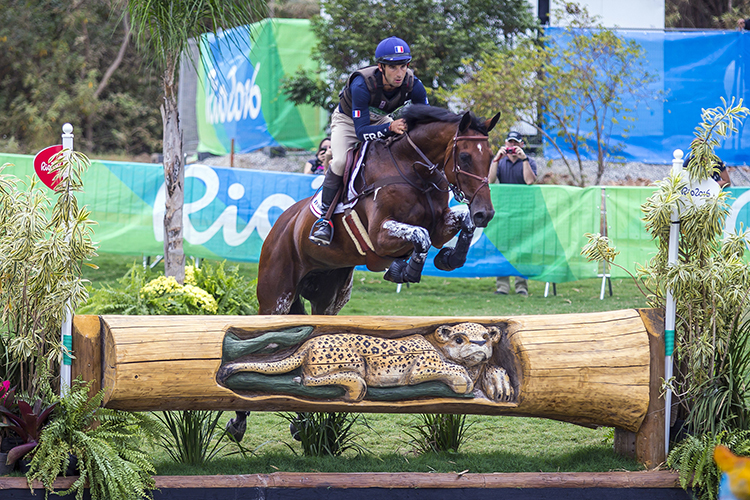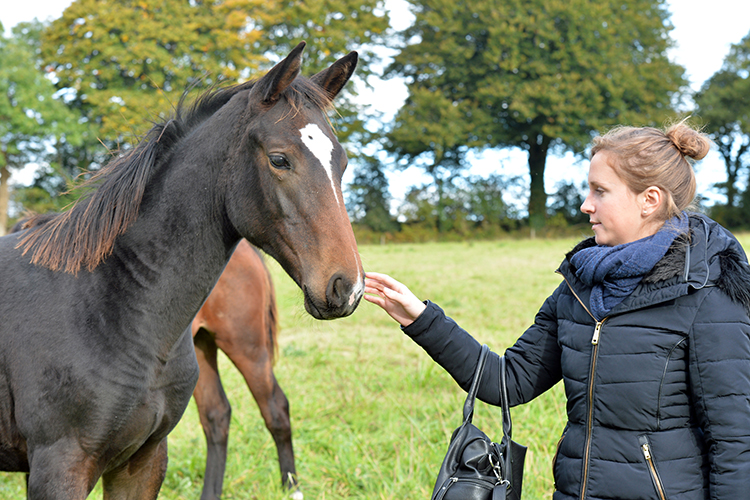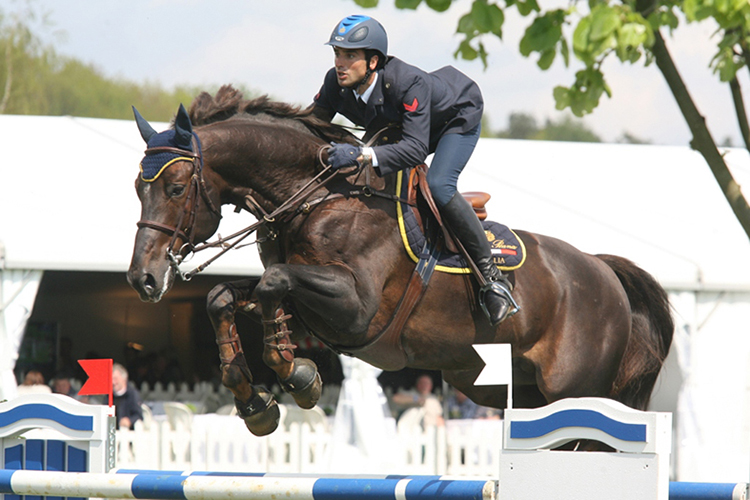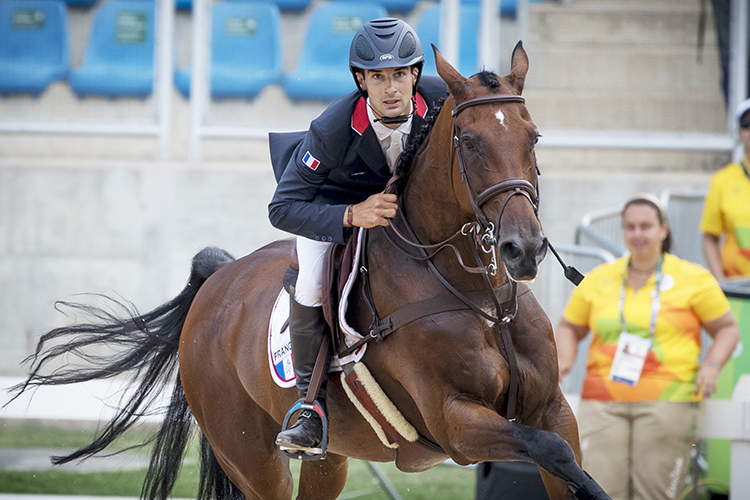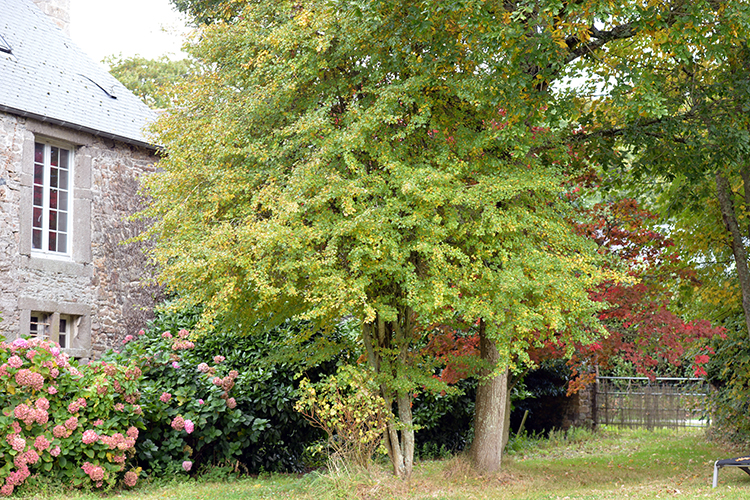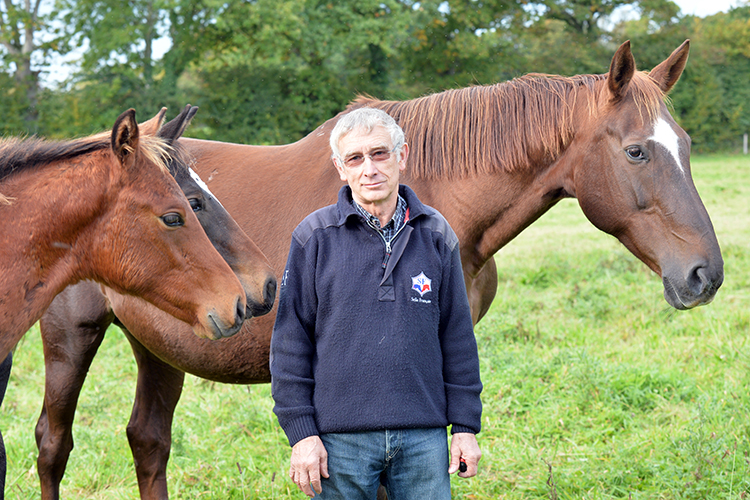Concours Complet d’Equitation : Germany’s Julia Krajewski in the lead after dressage test of the CCI 4*-L Equi Action…

(PRESS RELEASE) Today, the Verrie racecourse hosted the second part of the CCI 4*-L Equi Action dressage test. And what a second part – upsetting the ranking of the day before! Yesterday in the lead after in the dressage scoring 70.87%, the Italian Stefano Brecciaroli is now relegated to provisional seventh place, ahead of an impressive array of French riders … and a German rider, Julia Krajewski, takes the lead. On an average of 75.32% (24.7 penalties), the German rider, riding Amande de B’neville, is ahead of the Frenchmen Thomas Carlile and Birmane (74.84%, 25.2 penalties) and Nicolas Touzaint on Eboli (72.54%, 27.5 penalties ). Eight combinations, out of thirty-four, thus finish the dressage with an average of over 70%: which demonstrates the level of entries for this last French CCI 4*-L before Tokyo.
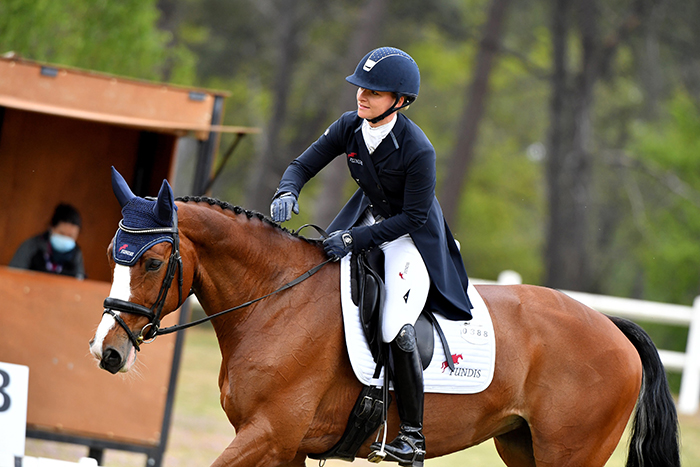
Julia Krajewski and Amande de B’neville
© Comité Equestre de Saumur / Photos Les Garennes
Tomorrow, Saturday, the riders of the CCI 4*-L Equi Action will meet on the cross-country course created by Pierre Michelet. First departure at 12:15 p.m. Live broadcast on SC Sport (www.saumur.org).
Start-lists et résultats ici.
A word from Julia Krajewski (GER)
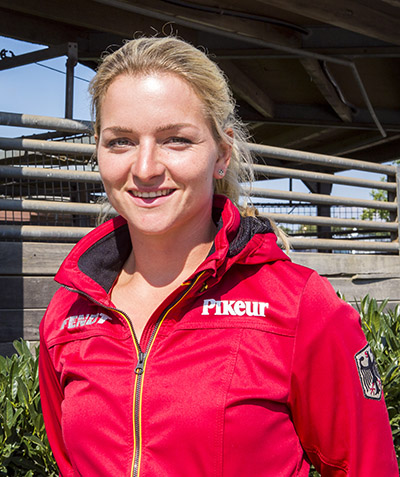
“I am of course very happy to be at the top of the provisional classification at the end of the dressage. Amande de B’neville had a very good session. She is a mare that can stress, so you have to be careful not to asking too much of her, while constantly sending her positive signals. Today, she was really with me and relaxed during the session. For the other phases, I am more relaxed: She is a very good jumper and above all a real cross-country machine. She has never competed in a CCI 5* before and is still developing: Saumur Complet gives her a very good experience. About the cross-country course of tomorrow, which I have walked today, it seems to me very interesting. The time allotted is accessible; it is sufficiently technical, it will be necessary to ask the right questions and undoubtedly to give a breather to the horses on long gallops, in particular towards the 8-9 minute mark. I did not know the cross country course of the Saumur Complet before: then I studied the videos I found on Youtube. I am very satisfied: the elements I was expecting are indeed on the course of tomorrow! Despite everything, we will have to be very focused and constantly anticipating.”
story continues below the advertisement
Julia’s mare, Amande de B’neville is by the 1.60 showjumper Oscar des Fontaines by the Danish bred showjumping star, Lando, out of a mare by Mr Blue – on the dam line we find three generations of b’Neville breeding, the mare line of master eventing breeder, Jean-Baptiste Thiebot.
Jean-Baptiste Thiebot and the Haras de B’Néville
(this interview was conducted in 2017)
Now I had been warned by several people that the interview would be difficult, Jean-Baptiste does not talk, I was told. It must have been my lucky day, because he talked and talked, so much so that I had to hold up my hand to stop him, to let our minder, Elise Bourdin from UNIC, catch up with the translation.
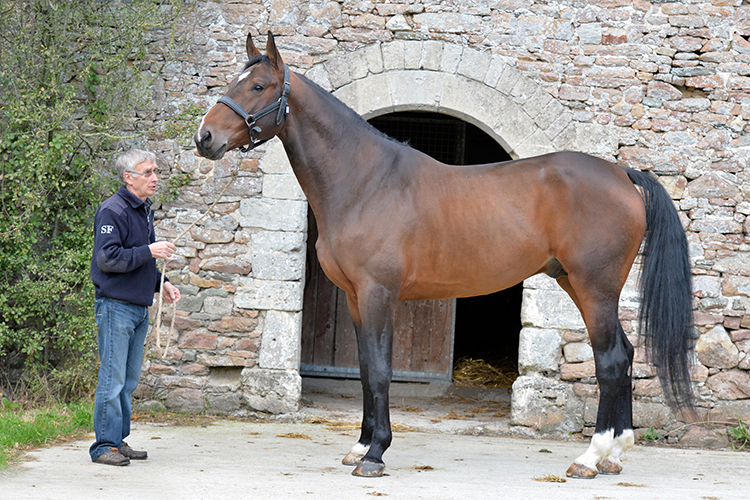
Jean-Baptiste and his young son of Kannan, Cristal de B’Néville
Jean-Baptiste’s farm is beautiful, wonderful old stables, a gracious mansion and a lovely garden, but you can see that inside the house is far less important than the exterior. Papers cover almost every available surface, and a microwave seems to have taken over the traditional French kitchen. His friend, Catherine Delpierre, who is helping take care of the visitors, remarks that ‘all Jean-Baptiste cares about is his foals, the rest of his life is not very important.’
It seems Jean-Baptiste was headed for the more conventional life of a lawyer, before horses took over: “I was studying law, and I came here for a holiday with my uncles, they had cows and six mares. Before the Selle Français studbook, it was the Anglo Norman studbook. Here in Normandy there were always a few places with Thoroughbred mares, and these mares were mixed with the Anglo-Normand. This breeding base came from Ireland and the United Kingdom.”
“After my law studies, I started to think about the future, and I decided to become a farmer and a horse breeder so I came back to this farm in Normandy. I started breeding some horses, and it grew, I had eight mares, so it started.”
The star Piaf de B’Néville – silver at Rio
You breed for showjumping rather than eventing because there is more money in showjumping…
“About thirty years ago, there were as many eventing competitions as there were showjumping, now it is very different. Then the great equestrian families of Normandy – Navet, Leredde and Pignolet – were eventing. Then the direction went to showjumping because you can make a lot of money in showjumping.”
Mares and foals, left to right: Lady de B’Néville (Cellebrio/Eve de B’Néville/Qredo de Paulstra); Graine de B’Néville (Urquino du Hamel by Quinoto Bois Margot/Lady de B’Néville); Sonate de B’Néville (Qredo de Paulstra/Ecume by Rosire); Genial de B’Néville (Kapitol d’Argonne by Apache d’Adriers/Nuance de B’Néville); Galaxie de B’Néville (Othello du Phare by Kannan/Sonate de B’Néville); Nuance de B’Néville (Talent Platiere/Vigie de B’Néville by Dear Patrick); Gloire de B’Néville, (Giovani de la Pomme by Shindler de Muze/Onde de B’Néville); Onde de B’Néville (Talent Platiere and Eve de B’Eeville by Qredo de Paulstra); Gandhi de B’Néville (Othello du Phare by Kannan/Oceane de B’Néville); Oceane de B’Néville (Quiniou/Griffe de B’Néville by Rosire)
Will this change after the success of the French eventers at Rio?
“All the money goes to the bigger showjumping competitions, but I do have two young horses in my stables that I think would be very good for eventing, so I hope that after Rio the market will go up for eventers. Eventing is a wonderful competition – dressage, cross country, showjumping – I would like to continue to sell horses foreventing, but the reality is sometimes difficult, and I will sell horses for showjumping because I need to live.”
What have been the most important stallions that you have used?
“Recently it has been Kannan. He produces foals at every level, for amateur riders and top level riders. I have twenty five mares and I use about twenty different stallions.”
Our super minder from UNIC, Elise Bourdin makes friends with Genial de B’Néville
Do you use some of the younger stallions, or only the established stallions?
“I use some younger ones. A lot of breeders in France are using Kannan and Diamant de Sémilly, but I am also using sons of those two. The foals of Diamant are either top level, or nothing, so breeding with him is a risk. When I choose stallions, I prefer to choose stallions that are ridden by girls, or by rich amateurs. The amateur riders have the best horses because they are not such good riders – when the horse is ridden by Ludger Beerbaum or Kevin Staut, you can’t be sure how good it is.”
“I have used the stallion, Kapitol d’Argonne (Apache d’Adriers / Galoubet) who was ridden by the Italian, Emilio Bicocchi, this was a very good horse because he wasn’t ridden by the best rider in the world.”
Kapitol d’Argonne – Jean-Baptiste likes horses ridden by not so good riders
You like to keep ‘blood’ in your breeding program – is that hard because people don’t want to buy the foals of Thoroughbreds?
“It’s complicated, it is hard to get good blood, there’s no point in blood if it is bad blood, the foals need to be good in the head. My mares have blood. For example, with Piaf, one journalist said it was amazing that he looked like a horse with a lot of blood, when his pedigree didn’t look like that, but there is blood in the fourth generation.”
(Actually Piaf de B’Neville is over half – 57.42% – blood. He is by Cap de B’Neville a grandson of the great Rantzau xx, out of a mare by the Jalisco son, Reve d’Elle. Once you go behind that fourth generation you find all the great Thoroughbreds that influenced the French horse: Rantzau – who is the only one who appears in the fourth line, Ultimate (x 3), Furioso, Le Sancy, Fra Diavolo, Phalaris, l’Alcazar and seven crosses of Orange Peel.)
“I have a mare by Quick Star, which has a lot of blood and I bred this mare to Lam de Fétan (Ferger Mail / Le Tot de Sémilly) who is quite heavy with not a lot of blood, but the foal is a blood type.”
Right from the start was Piaf something special?
“Certainly not. At the beginning he was nothing special. He was not very tall because he was the first foal of that mare. Finally when he was three years old, you could see he had very good movement. When he was three I presented him to some buyers, but they didn’t like him because he was too young and too green. But then the coach of Astier Nicolas saw Piaf and another horse, but they bought the other one and they were training him for the Young Horse Championships at Pompadour for eventing.”
“But six weeks before the Championships the horse was injured and the coach, rang me and said, Mr Thiebot, it is a catastrophe, she remembered Piaf and asked if I could sell the horse so the rider had something to take to the Championships. The rider started to work with Piaf and Madame Perrier liked him a lot, but a few months later the rider stopped riding, and her father rang me to say he didn’t want the horse any more, and Piaf came back here.”
“Then Astier’s mother rang to say that Astier had seen the horse and liked him, but then he was owned by his friend and he didn’t want to interfere. So she came with Astier and after a trial, Astier bought him with the help of a friend. It is another example of the extraordinary stories of horses, if Piaf had stayed with the first rider, no one would have ever heard of him.”
“Another example of this is Nino de Buissonnets with Steve Guerdat. The horse was sold for nothing because the owner didn’t want him. The same with Ideal du Thot, he was owned by a couple near here, they didn’t see the horse was good, and he won a World Cup final with Beat Mandli. Sometimes I have to sell my horses to riders who are not very good because I cannot keep them, but I cannot choose, so sometimes the future of the horse is not what I hoped.”
What is the passion? What makes you a horse breeder?
“Sometimes it is better to live with horses than with humans. My passion is breeding horses and I want to share this passion with other breeders. I don’t know if it is the same in the other parts of the world, but in France the Selle Français studbook has registered 50% less foals than they did in the past, but I hope the level will stay there and not get any lower.”
“I take a lot of care of how the horses grow up, their feeding and the fields is very important for the well-being of the horses. Everything is based on a four-year preparation for the horses to be ready to event and showjump. I produce about 80% of the food for my horses, using different grains, and every day, they get supplements and minerals. When people come here to buy a horse, and they take x-rays, they find nothing bad because of the way they are raised.”
Jean-Baptiste shows off one of his broodmares – Oceane de B’Néville
“The problem is that we can keep the stallion semen, but when the mares die, then they are lost. In Italy they are trying to produce foals in laboratories, with no parents anywhere, and with just one mare, they can get over 20 eggs. For eventing our horses have to have so many different characteristics, I guess that the foals born in labs won’t have these qualities and won’t be able to compete in eventing.”
Would you like to read the whole article?
https://www.horsemagazine.com/thm/2018/07/french-eventing-what-made-france-great-part-one-the-breeders/
or the whole series?
https://www.horsemagazine.com/thm/2017/01/french-eventing-part-two-the-anglo-arab/


